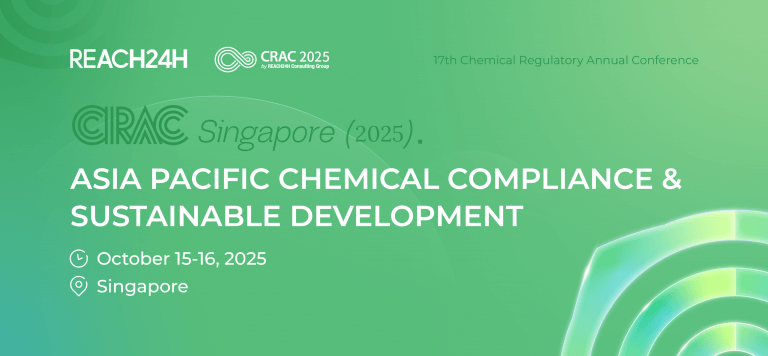With the rapid development of the industry, the safety and sustainable development of chemical industries has attracted more and more attention. At the CRAC-HCF 2021 Virtual Forum held by REACH24H on November 8, 2021, Mr. Otto Linher from the European Commission, together with Ms. Tatiana Santos form the European Environmental Bureau, Prof. Joel Tickner form the University of Massachusetts Lowell, and Mr. Pang Guanglian from the China Petroleum and Chemical Industry Federation Executive Board, discussed the topic of green chemistry and sustainable development and shared their opinions.The European Commission adopted its Chemicals Strategy for Sustainability (hereinafter referred to as Strategy) on October 14, 2020, which is in the framework of the European Union Green Deal whose primary goal is to bring about climate neutrality for Europe by 2050, aiming to better protect humans and the environment from hazardous chemicals. Speaking at the CRAC-HCF 2021, Mr. Otto Linher, who is the Senior Expert in the European Commission dealing with the revision of the EU REACH regulation, introduced the implementation of the Strategy, and corresponding actions and regulation future changes in detail. This Strategy includes over 80 actions, such as:
- boosting the investment and innovative capacity for production and use of chemicals that are safe and sustainable by design;
- establishing a simpler “one substance one assessment” process for the risk and hazard assessment of chemicals;
- banning the most hazardous chemicals in consumer products - allowing their use only where essential; and
- revising relevant legislation, including EU REACH and EU CLP, subject to comprehensive impact assessments; etc.
- EU REACH: revising information requirements for registration and the provisions for dossier and substance evaluation; improving the generic approaches to risk management; simplifying communication in the supply chains; etc.
- EU CLP: adding new hazard classes on endocrine disruptors; clarifying the definitions of mixtures and complex substances; improving labeling; etc.
- Rapid increase of consumption and production in emerging economies causes a heavy burden on the earth and it’s hard to be relieved in the coming years;
- Global supply chain becomes more complex with obvious consequences to the risk management;
- Divergent risk management systems and double standards; and
- Lack of chemicals info and corporate liability.
 As well as reported by Prof. Joel Tickner, the chemical industry with right incentives and changes plays a critical in the global economic and sustainable development. Efforts are underway to address the impact of the chemical activities, such as climate changes, toxic impact, and plastic generation. However, innovation of designing safe and sustainable chemicals that are in a more circular form from their production to use and deposal is still a challenge. In his opinion, there are some methods to meet the goal of green chemistry, such as:
As well as reported by Prof. Joel Tickner, the chemical industry with right incentives and changes plays a critical in the global economic and sustainable development. Efforts are underway to address the impact of the chemical activities, such as climate changes, toxic impact, and plastic generation. However, innovation of designing safe and sustainable chemicals that are in a more circular form from their production to use and deposal is still a challenge. In his opinion, there are some methods to meet the goal of green chemistry, such as:
- New regulatory and financial incentives and disincentives to reduce production of and demand for fossil fuel-based, toxic, and non-circular chemicals and materials while increasing incentives for more sustainable options;
- Public-private, long-term and sustained investment and support for research, innovation and technology transfer of safer and fossil-free chemicals, production systems, and products; and
- Government-private sector partnerships and industry collaborations that align demand signals and grow markets for more sustainable chemicals and materials.
- The Action Plan to Hit Carbon Emission Peak Before 2030 was released on October 26, 2021. China is taking action to reduce carbon emission and waste, promote renewables and unconventional fuel, and support technology innovation. (ChemLinked news)
- The revised Law of the People’s Republic China on the Prevention and Control of Environmental Pollution by Solid Waste was adopted on April 29, 2020 and took effect on September 1, 2020. To reduce the municipal solid wastes from the source, compulsory national standards on limiting excessive packaging are formulated. In addition, the prohibition and restriction of the manufacturing, sale, and use of disposable plastic products are specified in the revision. (ChemLinked news)
- QR Code Pilot Project in Guangdong province: “one chemical package – one QR code” for all hazardous chemicals. As of September 2021, there are 95% of enterprises in Guangdong province participated in this project. Each registered product will be assigned a QR code, through which the user will be connected to the system to access all relevant registration information and download the corresponding SDS and label of the product.





